#I made this set bc I again want to have quick visual reference when reading fics
Text


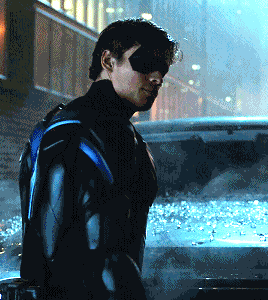







Tired Bat Dad™
#I made this set bc I again want to have quick visual reference when reading fics#batman#nightwing#richard grayson#bruce wayne#ben affleck#batfleck#Brenton Thwaites#titans#batman v superman#bvs#batfamily#bat family#justice league#snyderverse#dc comics#dc#snyders cut#edit
267 notes
·
View notes
Text
Getting started learning Japanese.
Here’s some resources I’m using to learn Japanese and what I think they do well and not so well. This is all based on my own experiences and what works best for me.
I will be rating based on the following criteria: Cost, Is it easy to use?, How much does it cover?, Pros, Cons, Overall impression.
Tofugu
I’m replacing a previous recommendation with this one. Far superior. I’ll just get right to it.
Free. Easy to use.
Pros: articles on just about everything. Theres a podcast. And every month they post resources for learning japanese. I highly recommend this website for these posts alone.
Cons: some content you gotta pay for but as far as i know they don’t duck around with people’s trust. They are the creators of wanikani and they gotta make money somehow.
Overall: far more useful that the first website i had on here. Maybe I’ll add more details later, but I just wanted to update this one as quickly as possible.
Japanese from Zero (video series)
https://www.youtube.com/playlist?list=PLOcym2c7xnBwU12Flkm5RcLIEhvURQ8TB
Cost: free
Easy to use: yes. Theres a nice playlist so all you have to do is sit and watch.
How much does it cover: You start out knowing absolutely no japanese and by the end of lessons you will know two writing systems. Basic sentence patterns and grammar. There is even a kanji series.
Pros: nothing is easier than sitting and watching videos to learn. You can play it anywhere at anytime. George has been teaching/speaking Japanese for years so he knows where students get stuck. He gives good explanations and examples on when to use new content and when not to use the new content.
Cons: because its a series, sometimes George refers to previous lessons or his book and you may be missing some context if you start in the middle or skip through some lessons.
Overall: The first lessons were painful to get through because It starts out with romanization and if you already know the writing systems, seeing the romaji on screen is like listening to nails on chalk. Not to mention I have a personal beef with numbers and counting as well as the common phrases like “おはよう”
But it is called Japanese from Zero and it is meant for someone who knows absolutely nothing about japanese so I can forgive the painful beggining lessons. Once I got past the introductory stuff the videos became more enjoyable.
Duolingo (app)
Cost: free
Easy to use: yes
How much does it cover: basic japanese sentence patterns, all three writing systems and a handful of new vocabulary.
Pros: teaches new words and sentence patterns and really drills them into your head. Gives you a few new words at a time so you can take the time to learn them without being distracted from all the other words you need to learn. You can go into the course as a Japanese person trying to learn English and really get the most out of Duolingo because the japanese version starts out with Kanji and even gives polite and casual sentence forms.
Cons: very repetitive. I don’t find fault with this but a coworker of mine found this to be very annoying and I can understand why. Duolingo says the lessons will get harder but instead its the same lesson except now you have to review it 10 times instead of 5. That’s not exactly hard, that’s just tedious. My biggest gripe with duolingo is that it doesn’t explain particles or why the kanji has different readings. In order to figure that out I had to go and do my own research which isn’t a big deal but if you’re only using duolingo by itself it makes it harder to understand why you keep getting things incorrect and subsequently how to fix it.
Overall: I will admit I am biased towards duolingo because I’ve used it for Spanish, French, Italian, and now Japanese. I was there from it’s early days when it was absolute shit and it has come a long way. I recognize the issues with Duolingo right now but I know that they are constantly updating. Painful as it may be to keep hearing 六時六分です it really is teaching you sentence patterns that you can use to make your own sentences. You just have to go out and do a little extra work yourself. It is, by far, the easiest to use and the method I use everyday.
TinyCards (app)
Cost: free
Easy to use: yes
How much does it cover: it covers a lot of vocabulary phrases and even sentences. You can probably get a lot mileage out of this one if used correctly and if you’re willing to put in the work
Pros: dozens of pre-made flashcards to choose from and the ability to make your own. Cards come in sets that you can unlock by finishing the first set similar to duolingo. A lot of other flashcard apps work in a similar way except they make you pay for the rest so I appreciate that this one is free of charge. Plus you can find flashcards specifically from the duolingo courses so you can study the vocabulary in isolation rather than in a sentence. Interactive flashcard system. So you don’t just flip cards and call it a day, occasionally you will have to write out the translation in the target language or pick from several choices.
Cons: the difficulty can be a little inconsistent. Sometimes you just flip a card and say I remember that one and other times you’ll have to translate a full sentence in Japanese. Even if you get the kanji right, you may get the answer incorrect because the card wants the hiragana and vice versa. And because there are so many card sets to choose from, not all of them are useful.
Overall: a sister app to duolingo it seems. Cards come from the community of learners and are not limited to japanese or languages. You can also learn about history, art and pretty much anything else. I appreciate the interactive aspect as most other apps don’t do this and the ones that do are muuuch more inconsistent than this one. I found similar interactive flashcard apps that would sometimes show Vietnamese translations instead of English translations. I’ve only recently been using this one but I pretty much gave up on using other similar apps bc they were very inconsistent. I haven’t used it very much though because I’ve discovered that I’m not a flashcard learner. If you learn best with flashcards then I would recommend it.
Tae Kim’s Guide to Japanese (website/pdf/app)
Cost: free
Easy to use: relatively. Just read the damn thing. I get it though. Reading is very tedious
What it covers: It really is a beginner to advanced beginner guide covering the same things as all the above. Basic grammar, writing systems and such. One thing that is very unique about Tae Kim’s guide however is that it also includes cultural notes such as explaining casual vs polite speech. Male vs female speech that a lot of the other resources don’t even touch on
Pros: A very good starting point that covers so so much. The website has an option to show/toggle translations. Additional cultural notes plus examples. Almost every“how to learn japanese” guide points to this website
Cons: one of the reasons I was holding out on making this list was because I haven’t finished going through all the resources so I don’t have any cons for this yet. I’m only part-way through and I’ve yet to have any issues with it. Maybe just that once it gets the point across it immediately moves on. You don’t really have time to digest the content so It’s like a very in-depth crash course in japanese. You may need to go out and do extra research in order to really understand the content. If you don’t understand what is being taught, just read over it again and keep it in mind. I’ve found that I’ll come across more examples as I continue my studies and it all starts to fall into place
Overall: It doesn’t sugarcoat Japanese or treat the learner like a baby. If you read the introductory page, you’ll know what I’m talking about. Definitely influenced my approach to learning despite not having gone through all of it. Like other resources, it builds on top of topics already covered but it’s nice having a book-format with conjugation charts and lessons separated by chapters. Videos and podcasts are nice but Tae Kim’s guide also acts as a manual to supplement your learning. Maybe you want to write a sentence in the masu-form and need a quick reminder? Just flip to the page in the guide. No skipping through videos trying to find the part you need because it’s already there.
Manga Sensei (podcast/website)
Cost: mostly free. I believe theres some extra stuff you can purchase. I’ve seen a special podcast that requires payment and comes along with a free pdf. But for the most part, you get a lot of free content.
Easy to use: relatively. Havent been on the website much so for all i know it could be a mess
What it covers: the podcast covers a lot of grammar points and occasional vocabulary and cultural notes. Gives you a good foundation to build on top of. The website has more details on what the podcasts are about but I haven’t spent much time on the website as I have the podcast.
Pros: grammar points in 5 minutes or less. Differences between common words. Good for improving listening skills. If you’re driving or on a bus, you can learn on the go.
Cons: so much to choose from you kinda have to sift through what you need. Most of it is useful and there are a couple of repeat lessons as Manga-Sensei has a beginner’s guide every year. Because its audio only, you may be learning new words and grammar but you may not be able to identify them as quickly on paper. Best to supplement with some type of visual. I believe the website has something to solve this and I’ve heard there is a youtube channel as well? Although I am not sure.
Overall: If you’re going on a long car ride, folding your laundry or even just working-out, this is a great way to stay on top of your studies. Manga-Sensei has talked a lot about his projects such as his manga, alternate podcasts, and pdf. Even though I haven’t taken a look at all of them, it’s clear he’s working hard to bring content for listening, reading, and conversation skills. That being said, the podcast is just as good for learning as any other method. You can still understand the lessons (which are meant to be short and simple anyway)
Japanese Ammo with Misa (Video Series)
https://www.youtube.com/channel/UCBSyd8tXJoEJKIXfrwkPdbA
Cost: free although she has a Patreon as well if you want to support her.
Easy to use: yep
How much does it cover: A Lot. From basic videos about grammar to more complex videos breaking down japanese songs as well common phrases and little notes that you may not find in a textbook
Pros: Her lessons have a lot of examples and good breakdowns of the grammar and tense. If a verb is in the past-negative tense, she will break down how to get to that point from the plain form or dictionary form. The best part about her videos is that she has her examples on-screen and color-coded. It may seem like a lot at first, but once you adjust to it, it helps to retain the information.
Cons: Because there’s so much content packed into her lessons, I recommend getting a basic knowledge of Japanese first. She has a video series for basic/introductory Japanese. I would suggest starting with that series or George’s series, or Tae Kim’s guide. Just so you don’t get an information overload.
Overall: There is one video in particular that I recommend to watch and I’ll make another post about it, but I really enjoy her content. Even though some of her videos are very dense with information, the comments suggest that its still easy to follow. I just think that while you can still learn a lot as a newbie, you might retain more if you already understand some grammar.
Japanese (app)
Cost: free holy shit!!
Easy to use: relatively
Pros: search using english, japanese, radicals, or drawing the kanji itself. Flashcard system, where you can build your own decks or use a pre-made one. The flashcards operate on a spaced repetition system. Plus it provides example sentences, compound breakdowns, stroke order, conjugations and JLPT level.
Cons: The drawing search method is sometimes hit or miss but i’m impressed the app has this option at all, let alone that it does not crash the app (like some others I’ve tried). The pre-made decks can have up to 400 words or more which is great if you have that kind of patience but I rarely find myself excited to sift through all of those words only to have about 10 of them be useful to me.
Overall: Okay it’s not like this app is super amazing or revolutionary but it’s a dictionary and flashcard sytem all in one. Say you want to keep a record of the new words you learn to refer back to them later? Make a new deck! Or if you’re reading a book or newspaper and come across a word you don’t know? Add it to the list or make a new deck! I try use new words as often as possible to drill them into my head And although my studying has slowed a bit, this app is perfect to double-check spelling and usage. (At least until jisho.org gets an app). Plus it’s easier to learn and remember words when you’ve come across them on your own.
3 notes
·
View notes
Photo

For the week of 16 October 2017



This was a really busy week with some really great comics, endings, beginnings, middles, that resulted in four comics vying for a favourite spot. Doctor Strange #26 by John Barber and Niko Henrichon, Kid Lobotomy #1 by Peter Milligan and Tess Fowler, Maestros #1 by Steve Skroce, and Sherlock Frankenstein & The Legion of Evil #1 by Jeff Lemire and David Rubín. Published by Marvel, IDW/Black Crown, Image, and Dark Horse respectively.



Doctor Strange #26 is technically the second of two self-contained fill-in issues written by John Barber before the new regular team comes aboard, but both last issue with art by Kevin Nowlan and this issue, the last illustrated by Niko Henrichon, have been wonderful. This issue in particular makes me wonder what Barber and Henrichon could have done together for a longer period of time.
John Barber gives us a story that is essentially a dungeon delve, Strange and his assistant, Zelma, travel through abandoned NYC subway tunnels in search of lost relics. As they do so, they stumble upon a team of adventurers who were trapped eons ago driven somewhat mad, and possessed, by the evil that lurked in the temple. Dungeon crawlers are one of my favourite types of RPGs and invariably I love when they show up in fiction as well. Barber does a great job presenting the genre and, since magic is still a scarcity, relevant to the current Strange status quo. There are also some wonderful character moments, building upon the almost humility that Strange has had since Jason Aaron’s run and the humorous interaction between master and student.
It also helps that Niko Henrichon’s artwork is perfectly suited for this kind of mix of horror and fantasy. His designs for the adventurers, especially after they’ve essentially become revenants, is wonderful.



Kid Lobotomy #1 is the launch issue for IDW’s Black Crown imprint curated by former Vertigo editor, Shelly Bond, written by Peter Milligan and illustrated by Tess Fowler, and it is pure, unadulterated glorious madness. To me, this feels like those early heady days of the Vertigo imprint back in the early to mid-’90s, when it seemed like everything was brilliant and beautifully strange, with weird and wonderful ideas flowing. This first issue captures that spirit, the essence, and creates something new.
The setting, characters, and narrative set out from Peter Milligan is suitably bizarre. On its top level, this is a bit of sibling rivalry over property as Kid and Rosebud fight over the hotel, the Suites, that their father, Big Daddy, has left to Kid to run. Of course, Kid and Rosebud have an odd incestuous relationship, or at least seem to have had when they were children, whereas now it’s unclear when something is still going on or if everything now is just Kid’s hallucinations and nightmares. There’s also the hotel itself, populated with strange guests and stranger staff-- ghost children cleaning service and a shape-changing maid who doubles as the bartender and might be Franz Kafka’s youngest sister (who died in 1943 if you’re wondering)--and a “turn down service” of giving New Lobotomy procedures to help excise particularly nasty memories.
That’s the other bit, Kid, has been suffering rock star malaise for some time, tried to kill himself, so Big Daddy invested into curing him, coming eventually to the “cut up” technique of New Lobotomy and Kid has become the resident practitioner of the hotel. It makes me wonder if Milligan’s also playing with our conception of what’s truly happening here, whether some of Kid’s memories are real or not, or if maybe he thinks he was a member of a band because he ate the excised portions of the brain of a man obsessed with the band’s lyrics. There’s nothing to necessarily hint at that, but there are enough presentations of things not being as they seem that it’s a possibility.
And then there’s Tess Fowler’s art. It too has hints of some of the memory of Vertigo stalwarts, a bit of Richard Case, some Luca Rossi, a little Philip Bond, and a taste of Mark Buckingham, resulting in some wonderful artwork that perfectly suits the story. The character designs are great, and as per the reveal of the main lobby at the hotel (as above), they make me wonder about the story of these guests just based on look alone. I want to know more about the girl with wings and a tail, the woman who looks like The Crypt Keeper in an ornate gown, what exactly is attached to the tentacles, and, of course, the normal looking guy with the briefcase.
This is a great first issue and a great launch for Black Crown. I’ve very excited to see what’s to come both from this series and from the future publications.

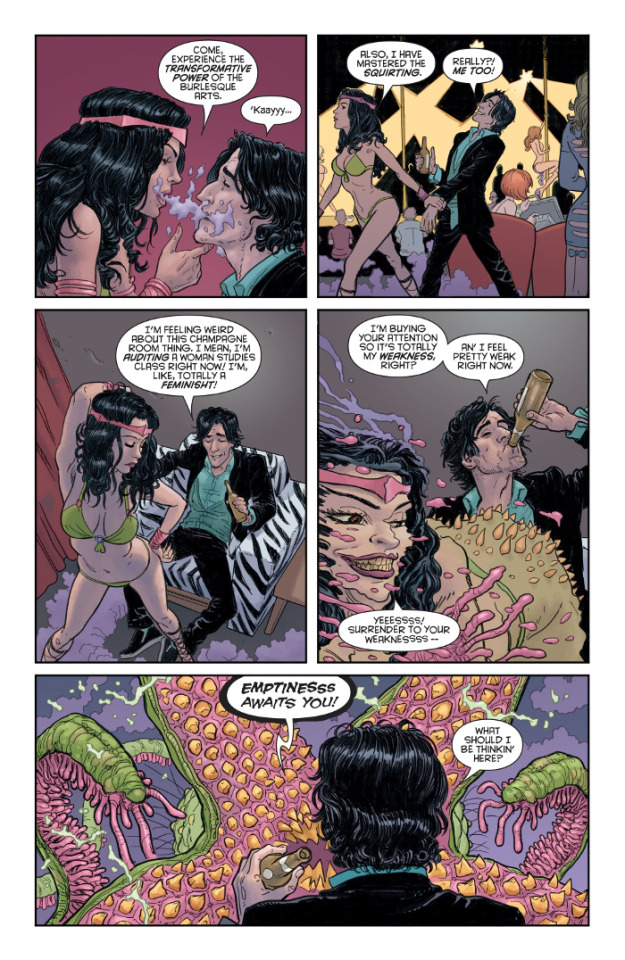

Maestros #1 is the latest return to comics by Steve Skroce, this time both as writer and artist on this new series. Maestros taps in to some of the same irreverent fantasy as Curse Words, but does so in a familial way.
The first issue introduces us to Will, the last surviving son of the Kahzar bloodline, the magicians or “maestros” that shape and control the known multiverse. His entire family has been decimated by a mad wizard, Mardok, and his army of weird slug and venus fly trappy-type things and now Mardok’s attention has turned to Will in order to finish the job. In comes Will’s mother, Margaret, armed with a trusty talking sword to save him. Cue flashback to Will’s adolescence and awkward moments with family as he learns that he’s got magical blood.
Skroce’s story is indeed the traditional sad boy finds out that he’s special a la Harry Potter, it’s even reference in text, but it’s turned a bit on its ear partially because of the dark humour that’s peppered throughout the story, as well as the fact that the magicians really are pompous dicks that you don’t really feel bad about all of them being slaughtered. You are made to care about Will and his mother, but it’s interesting to see our mundane Earth made special and more pure, as well as its residents, through our lack of magic that runs through the rest of the multiverse.
As usual, Skroce’s art is gorgeous. After the relative normalcy of We Stand on Guard, it’s nice that he’s cutting loose again with some weird fantasy. Like many, I first saw his art on Ectokid for Clive Barker’s Razorline from Marvel and it’s pleasant to see him go back to something raw, strange, and magical.
It’s also fun to see that on Earth this occurring in the lower mainland of British Columbia. Skroce throws in some references like Mugs n Jugs and Abraham’s Books that are sure to amuse BC buds.



Sherlock Frankenstein and the Legion of Evil #1 spins out of Jeff Lemire and Dean Ormston’s Black Hammer series, following on particularly from #12, with Black Hammer’s daughter, Lucy, investigating his disappearance following the confrontation with Anti-God. The series is written by Lemire, with art by David Rubín who had also illustrated the two issues of Black Hammer that focused more completely on this story arc (#9&12). You needn’t necessarily have read any of Black Hammer before, though, as this arc takes place before the mothership and can largely be read on its own.
First, I need to reiterate that David Rubín’s art is absolutely amazing. His character designs are whimsical, intricate, and immensely interesting, perfectly fitting the oddity of the Black Hammer world. His depiction of Sherlock Frankenstein galumphing around in a giant mechanical robostrocity looks like the kind of madness I’m used to seeing leap off the page from Guy Davis’ tenure on BPRD. His page layouts and panel transitions, as well, are incredibly inventive. Just above there’s a spread in a spiral, leading to the central chamber, complete with snapshots of the various villains housed in this facility. Not only is it visually interesting, it manages to convey a fair amount of information about the inhabitants in one go. Great synergy between art and writing.
Second, Lemire is firing on all cylinders here. Perfectly mixing the sense of oddity, family, and nostalgia for old school superheroes that permeates the main Black Hammer series, but also bringing the mystery back to the forefront here. This first issue sees Lucy decide that trying to find the heroes has yielded nothing substantial, so she’s going to investigate their villains, particularly the guy at the top, Sherlock Frankenstein. She visits Spiral Asylum to find clues, especially from one of Frankenstein top henchmen, Mectoplasm. Lemire does a great job of making us feel for the guy, who turns out to be a child dragged from the afterlife and forced into a life of crime in a giant containment suit . It’s weird, but it fits.
Overall, I’m interested to see how this fills in some more of the backstory. I also wonder if it’s going to lead more to the relationship between Frankenstein and Golden Gail, although there’s no hint of it here.
Quick Bits:
All-New Guardians of the Galaxy #12 acts a kind of prelude to the Guardians’ upcoming Infinity Stones quest, as they swing by Earth to see if any of Marvel’s cognoscenti might have come across any of them. They also pick up a new member. This is also a fairly decent jumping on point, before the series adopts its Legacy numbering and starts a new arc. The art from Rod Reis is also phenomenal.
| Published by Marvel



Animosity #10 continues the investigation of the missing bees, with Jesse stumbling upon a somewhat strange farming community, and a familiar face in Mittens. Marguerite Bennett also gives us some more backstory on Jesse’s parents before The Wake. I’m interested in where this is going.
| Published by AfterShock

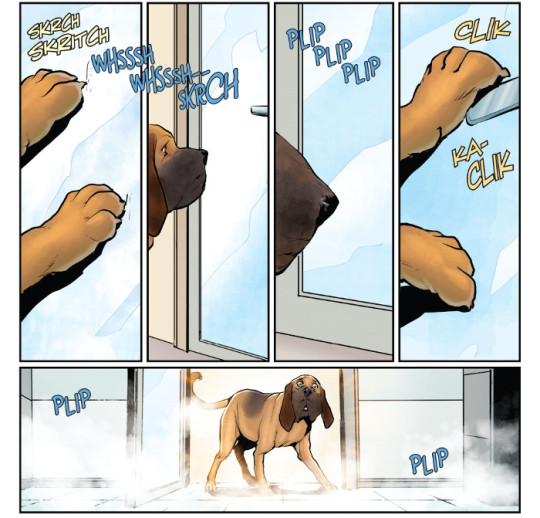

Animosity: Evolution #1 continues on from The Rise limited series, but still manages to stand on its own fairly well introducing, or re-introducing, us to the characters and the situation of the growing animal society in San Francisco. It’s nice to see this expansion into another side of the Animosity world. The politics and intrigue of the story certainly give off more of an Animal Farm vibe than the mothership, but it’s a welcome difference.
| Published by AfterShock



Critical Role: Vox Machina - Origins #2 ropes in Scanlan and Grog into the story through the raid and looting of a temple, wherein they find a vial tying back into the curse introduced in the first issue. It’s not quite as funny as the real thing, but Matthew Colville again does a great job of capturing the characters’ voices and provides an amusing addition to the story.
| Published by Dark Horse



Deadpool vs. Old Man Logan #1 is a great first issue, especially considering that Mike Henderson’s is truly wonderful. Declan Shalvey’s story is as humorous and over the top as you would expect from a battle between Deadpool and Logan and overall this is just outright fun.
| Published by Marvel



Faith & The Future Force #4 is probably not the ending that you’re suspecting. After throwing wave after repeating wave of heroes at the time-travelling genocidal robot, the finale tries a different tack in recruiting Faith’s arch-nemesis, Chris Chriswell, to combat the evil. It’s fairly inventive and a rather satisfying conclusion.
| Published by Valiant



Generation Gone #4 is pretty fucked up. The artwork by André Lima Araújo is gorgeous, but this is still one seriously messed up story.
| Published by Image

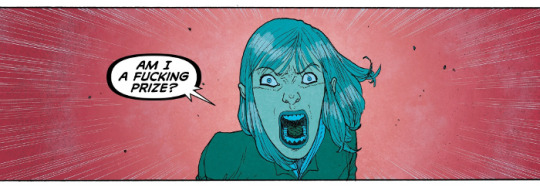

The Infinite Loop: Nothing but the Truth #2 is going to mess with you. Nothing I write can really prepare you without spoiling a lot of stuff. Just read it, it’s good. Plus, there’s a nifty Blade Runner reference.
| Published by IDW



Journey to Star Wars: The Last Jedi - Star Wars: Captain Phasma #4 concludes this limited series bridging The Force Awakens and The Last Jedi and, wow, it really shows off how single-minded, cold-hearted, and ruthless Phasma can be in her devotion to herself. Kelly Thompson has done a great job of making us care about the Pilot and the people of Luprora and...wow. I also have to reiterate that Marco Checchetto and Andres Mossa have made this the best looking Star Wars book from Marvel to date. I highly recommend this series.
| Published by Marvel



Kill or Be Killed #13 further explores the demon that has been central to the series from the beginning, but as per the rest of this arc, in a very different way. Ed Brubaker took a sharp left turn in the context of the story and it’s fascinating to see how it has changed dramatically, adding more depth and pathos, and giving a different understanding to what’s going on with Dylan. As usual, Sean Phillips’ art is stunning. Seriously, I think Brubaker and Phillips can do no wrong.
| Published by Image

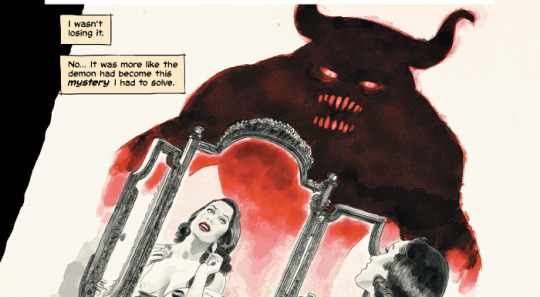

Kong: Gods of Skull Island #1 is a decent one off story from Phillip Kennedy Johnson and Chad Lewis. The plot is the oft-repeated one of invading white explorers stumbling upon an existing culture to deleterious effect, but it’s largely immaterial since it’s well told.
| Published by BOOM! Studios



Made Men #2 is every bit as good as the first issue, possibly even better, as it gets into more detail about Jutte’s team and their purpose. Paul Tobin does a great job here particularly with the dialogue, really hitting up some of the police tropes in a believable and entertaining fashion. And, again, Arjuna Susini’s art just really puts it over the top. This is a great book.
| Published by Oni Press

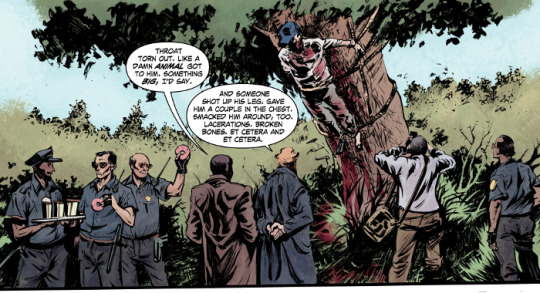

Magnus #5 concludes what was another great entry into the current Sovereigns reinterpretation of the Gold Key characters. The artwork by Jorge Fornés has been particularly impressive. He’s got a style that reminds me of Klaus Janson and the layouts and design of the pages have been amazing.
| Published by Dynamite



The Realm #2 lives up to the promise of the first issue fairly well. The setting, somewhere between Shadowrun and Shannara, is still compelling in itself, but Seth Peck and Jeremy Haun do a great job of making us interested in finding out more about our fairly enigmatic cast of characters as well. It also helps that Haun’s art is gorgeous.
| Published by Image

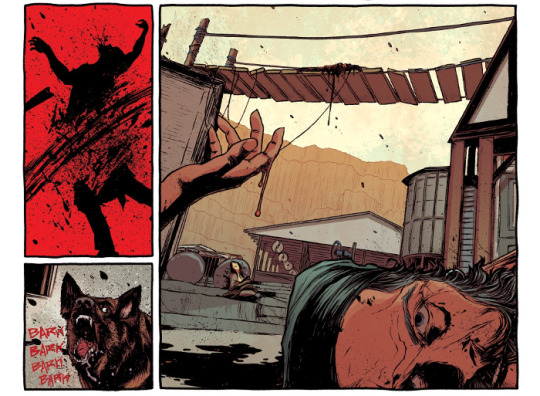

ROM vs. Transformers: Shining Armor #4 makes me think that this is more of what Revolution probably should have been. Sure, it’s still filled with all out action in the battle between the two factions, Dire Wraiths/Decepticons vs. Space Knights/Autobots, but there’s a lot more cohesion here, better focus on the characters, and a fairly compelling plot. It’s not particularly complicated, but it doesn’t need to be, it’s entertaining, very well-illustrated, and the characters are engaging. John Barber, Christos Gage, and Alex Milne are doing a great job here.
| Published by IDW



Saban’s Go Go Power Rangers #4 again has some of the best art in comics today. Dan Mora is just incredible with his layouts, action, and storytelling that even if the writing from Ryan Parrott wasn’t good (and it is), this would still be a highly entertaining series.
| Published by BOOM! Studios



Secret Warriors #7 is fairly inventive as it works its way to providing a reason for why the team should still exist. Matthew Rosenberg again utilizes humour to great effect to show some of the oddity of the heroes and their situation.
| Published by Marvel



Spy Seal #3 gets to some of the meat of the mystery as this penultimate issue ups the stakes and action. This has been very fun, at the height of many of the Tintin adventures and standing out among the best of Rich Tommaso’s works.
| Published by Image



Star Wars: Poe Dameron #20 kicks off a new arc, taking a brief break back at headquarters to deal with some personal stuff, before diving headlong back into the action and intrigue. It also puts voice to one of the funnier questions we all likely had during The Force Awakens.
| Published by Marvel



Transformers: Lost Light #10 takes us back to the Lost Light and, well, as expected it isn’t pretty. I’m quite interested to see where James Roberts is going to take us as Getaway’s mutiny is certainly one of the darker political angles the series has seen recently and likely the most horrific. You’re certainly left wondering why some of the more upstanding members of the crew still aboard know about what Getaway is doing and how complicit they are in some of the more heinous actions.
| Published by IDW

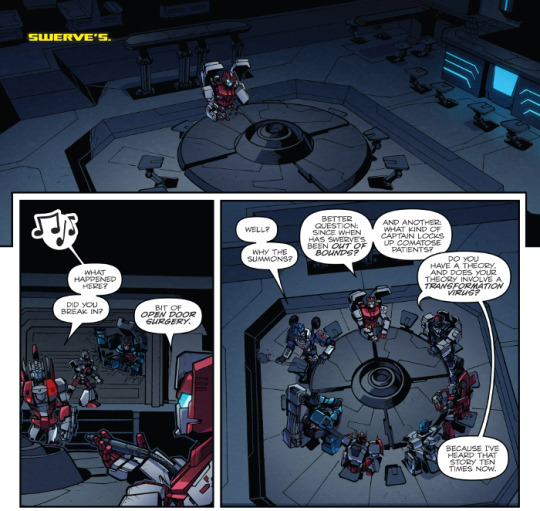

They’re Not Like Us #16 continues to tear apart the status quo set previously and throw our cast into new and deadly situations. As usual, the artwork from Simon Gane is incredible.
| Published by Image



Vampirella #7, despite being Paul Cornell’s last on the series, feels a lot like the series’ take on Moore’s “Anatomy Lesson”, redefining the character and her universe. New writer Jeremy Whitley co-writes this one, so there’s definitely some bit of the new direction he’s going to take, but, overall, it’s an interesting presentation of how this new series fits into Vampirella’s overall publishing history and how this new version of the character will be going forward. Also, the art by Andy Belanger is fabulous.
| Published by Dynamite



War Mother #3 ramps up the stakes for Ana’s tribe, while at the same time giving us a further revelation of the nature of the tribe’s personal affairs, thus advancing Max’s own machinations. Devious little kid. Fred Van Lente also gives us some welcome humour in FLACO’s little tantrum.
| Published by Valiant

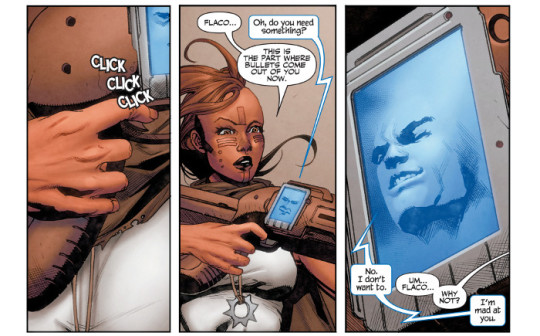

Other Highlights: Cable #150, Champions #13, Curse Words #9, Dept. H #19, Descender #25, Genius: Cartel #3, Ghost Station Zero #3, Half-Past Danger 2 #2, Heartthrob Season 2 #4, Horizon #15, Incredible Hulk #709, Invincible Iron Man #593, Kill the Minotaur #5, Luke Cage #166, Lumberjanes #43, Mage: The Hero Denied #3, The Mighty Thor #700, Misfit City #6, Mister Higgins Comes Home, Monsters Unleashed #7, Optimus Prime: First Strike #1, Rashomon, Riverdale #7, ROM: First Strike #1, Shirtless Bear-Fighter #5, Spider-Gwen #25, Star Wars Adventures #3, TMNT Universe #15, Venom #156, X-Men Gold #14
Recommended Collections: Black Panther & The Crew: We Are the Streets, Cutter, Darkness Visible - Volume One, Deviations Beta, Giant Days - Volume Four, I Hate Fairyland - Volume Three: Good Girl, Jean Grey - Volume One: Nightmare Fuel, Low - Deluxe Hardcover Volume One, Plastic, Spider-Gwen - Volume Four: Predators, Star Wars Adventures - Volume One

d. emerson eddy does not seem to have an invisible touch. He can’t reach in and grab right hold of your heart. His hand just kind of hits your chest and it’s all kinds of awkward and he apologizes.
#This Week in Comics#Doctor Strange 26#John Barber#Niko Henrichon#Kid Lobotomy 1#Peter Milligan#Tess Fowler#Maestros 1#Steve Skroce#Sherlock Frankenstein & The Legion of Evil 1#Jeff Lemire#David Rubin
1 note
·
View note